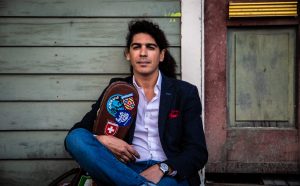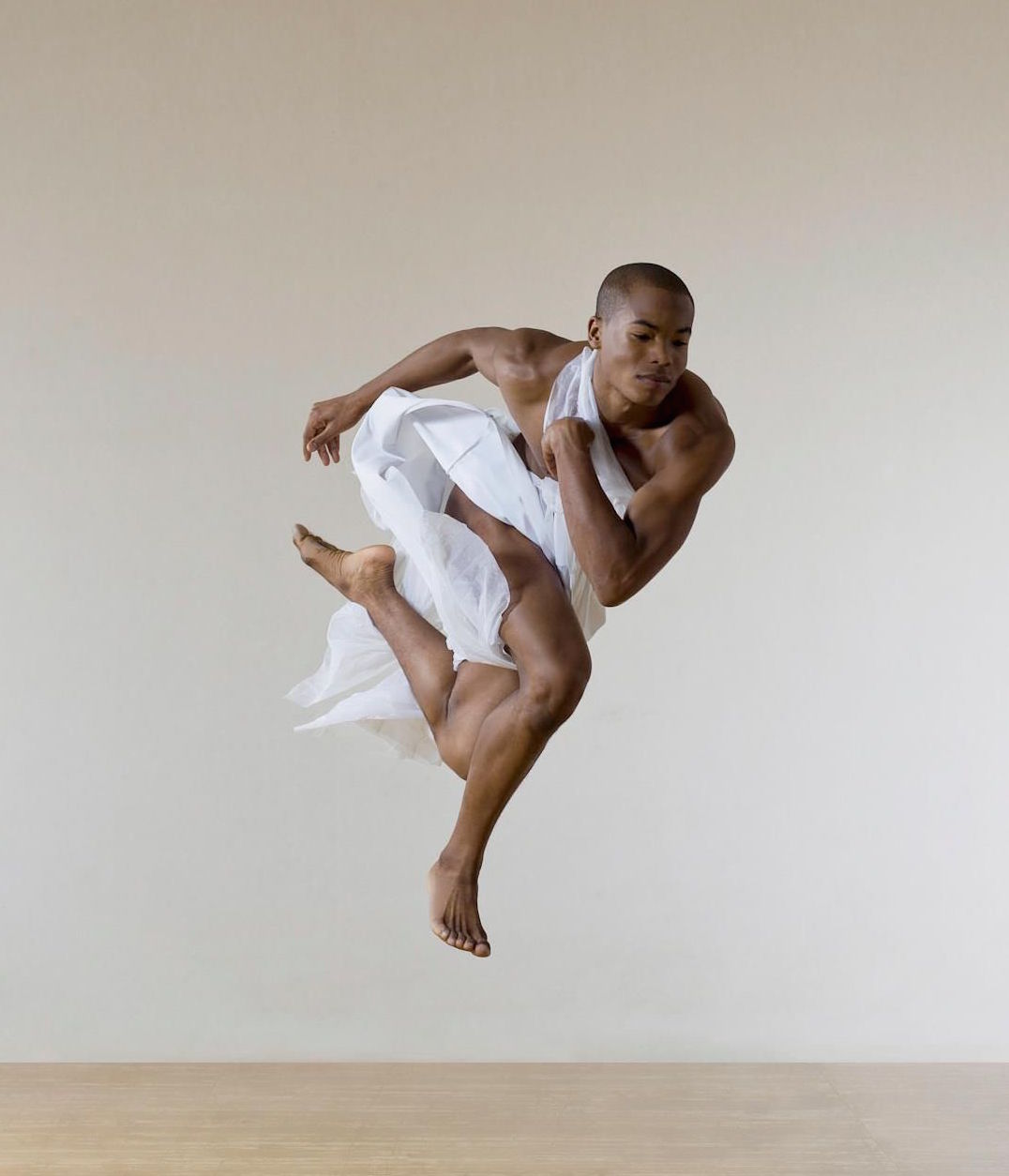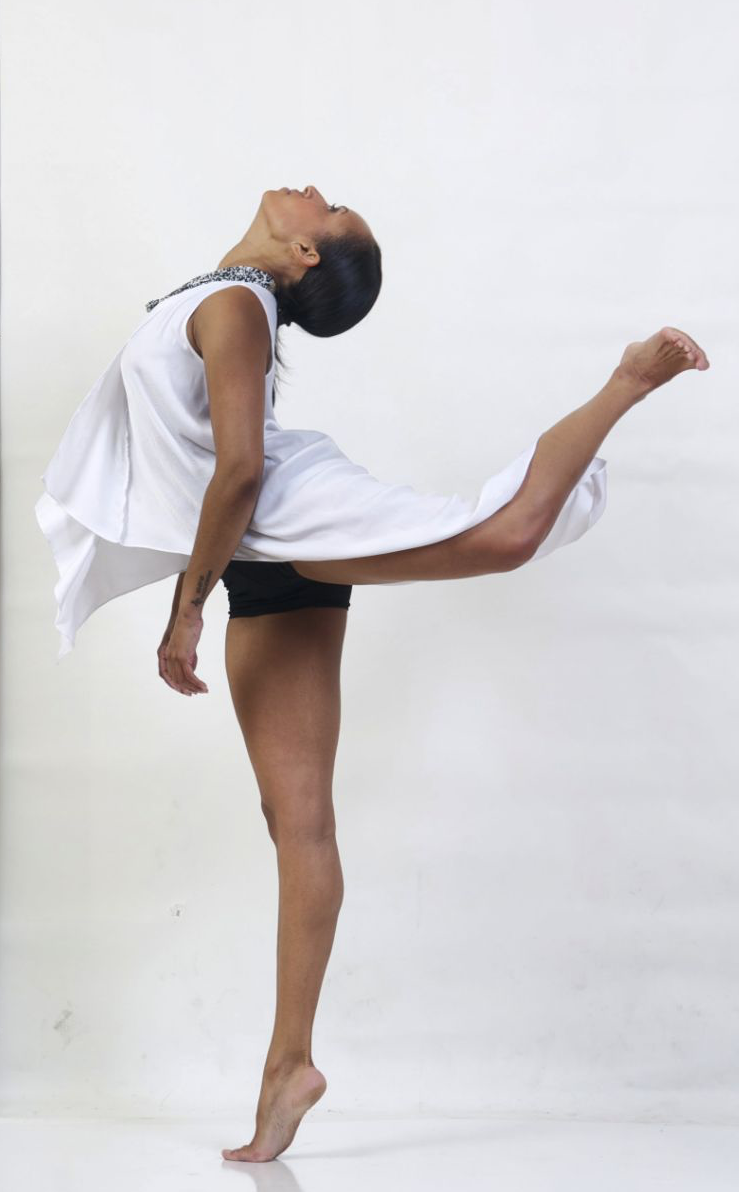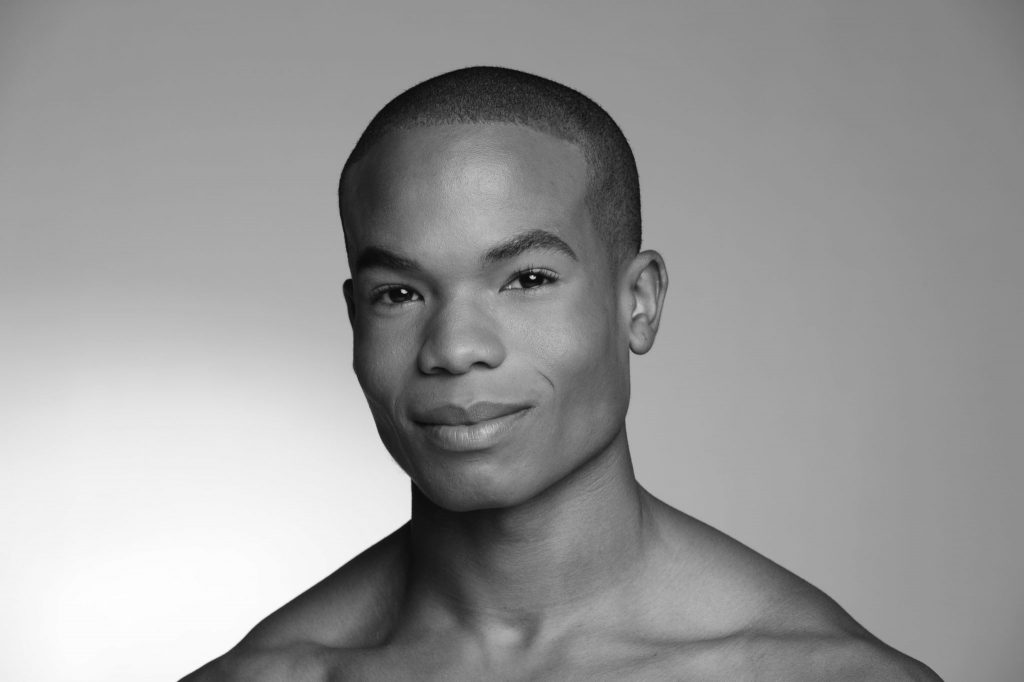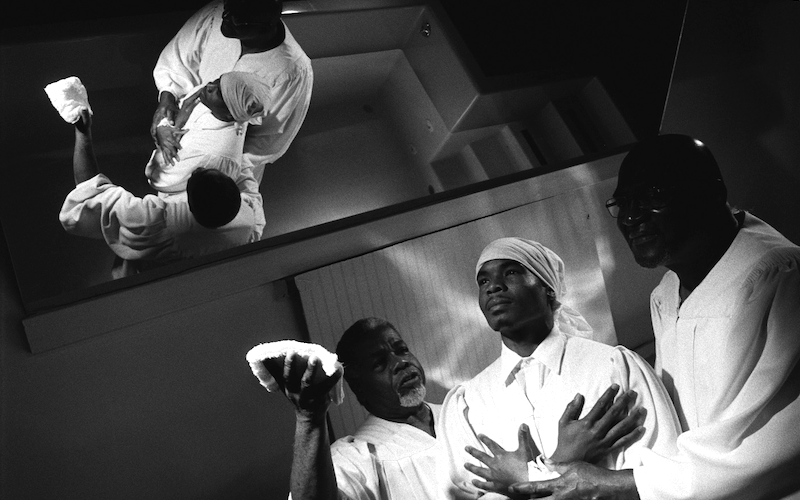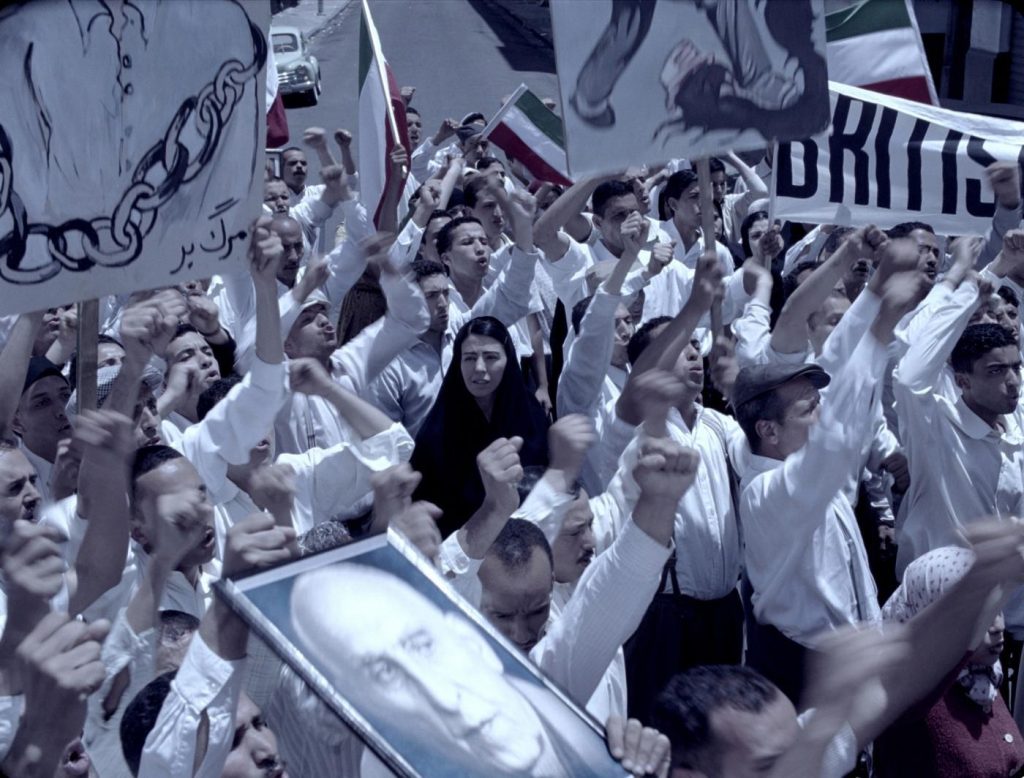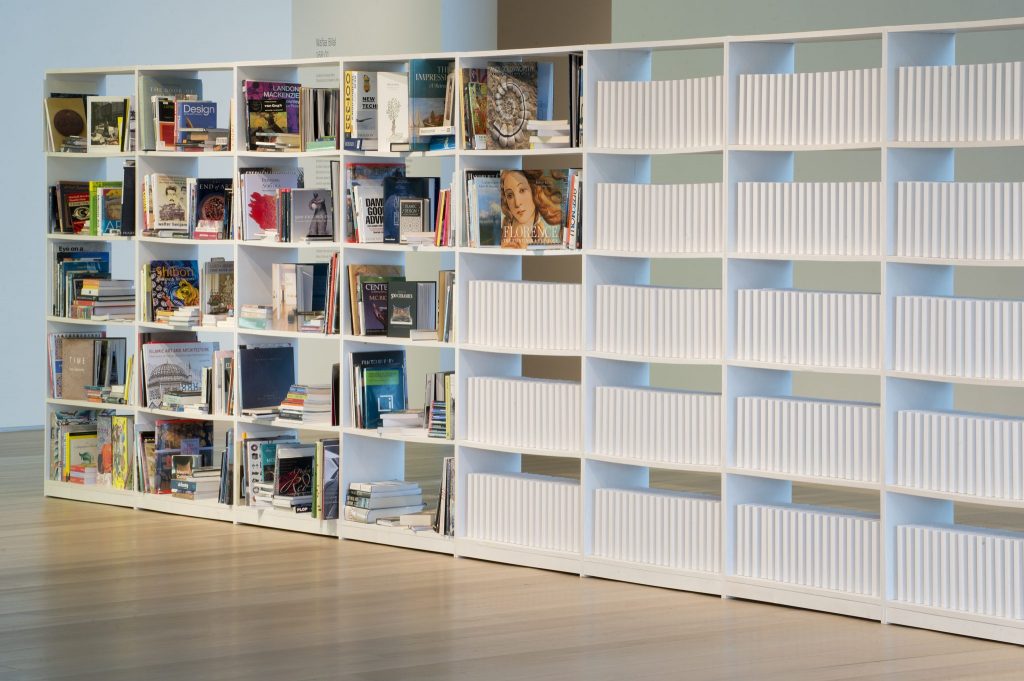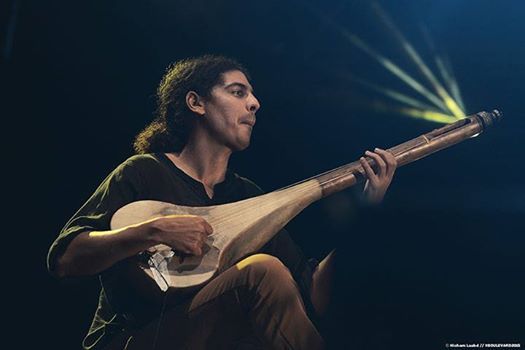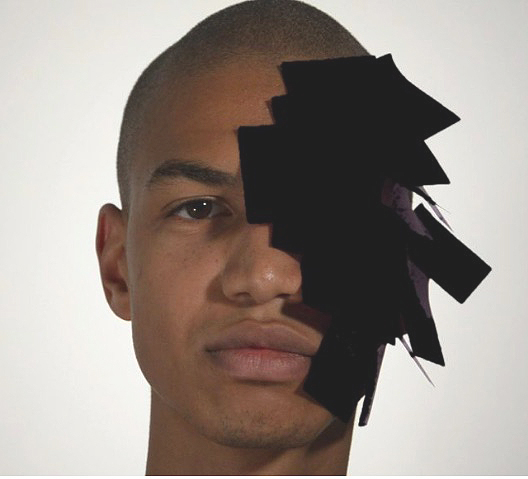
Bodies of Knowledge brings together ten international contemporary artists to reflect on the role that language plays in archiving and asserting our cultural identities. Working with materials that range from books and silent film to ink, ashes and musical scores, artists Manon Bellet, Wafaa Bilal, Garrett Bradley, Adriana Corral, Mahmoud Chouki, Zhang Huan, William Kentridge, Shirin Neshat, Edward Spots and Wilmer Wilson IV propose language as a living and ever-evolving document that can counter more staid and static ways of representing our collective pasts. Organized around a series of immersive installation and film projects, Bodies of Knowledge asks us to consider how we might write more inclusive narratives, reshape public space, and account for bodies and histories that have, in large measure, been written out of them. Bringing a new global perspective to current conversations in New Orleans surrounding cultural preservation and historical memory, Bodies of Knowledge draws together artists working with many different systems of knowledge to illustrate how history can be erased, rewritten and asserted anew.
Bodies of Knowledge is organized by the New Orleans Museum of Art and sponsored by Pia and Malcolm Ehrhardt, Drs. Joy and Howard Osofsky, Margo and Clancy DuBos, Carol and Byron Crawford, Kenya and Quentin Messer, and The Andrew W. Mellon Foundation.
In Brèves Braises, Manon Bellet invites musicians to perform in front of an installation composed of the charred remains of burned paper, letting the paper—a material that typically carries written histories—slowly crumble to dust through the improvisational energy of musicians as they play in front of the piece. Wafaa Bilal’s interactive installation 168:01 commemorates the burning of Baghdad’s libraries during the 2003 American invasion of Iraq, inviting museum visitors to fill the shelves of an austere white library with donated books that will be shipped to the College of Fine Arts at the University of Baghdad at the closing of the exhibition. Garrett Bradley’s immersive, multi-channel film America proposes that there was an entire body of silent films made by and for African American artists, audiences and filmmakers that has since been lost, and reimagines this lost archive through a corpus of new films. Mahmoud Chouki will create a new musical composition and series of site-specific performances for Bodies of Knowledge, titled Safar (Arabic for “to travel”), that will explore how music can speak across cultural divides to create new forms of dialogue between East and West. Adriana Corral’s Memento draws attention to the widespread disappearances of women and girls in Juarez, Chihuahua, Mexico, through a site-specific installation in which the artist writes these women’s names on the museum’s walls with ashes obtained from burned legal documents. William Kentridge’s animated film Zeno Writing, created in the artist’s signature, stop-motion animation style, layers drawings and texts from Kentridge’s personal journal to reflect on the ongoing transformation of history, politics, and memory in the contemporary world. Zhang Huan’s seminal Family Tree documents a daylong performance wherein he covered his face with words, names, and stories drawn from his family history and Chinese folktales, resulting in the artist’s likeness becoming completely obscured across a series of nine large-scale photographic portraits. Shirin Neshat’s practice—represented here by a photograph from the artist’s Rapture series and a related film program in the museum’s auditorium—probes stereotypes of Islamic militancy and femininity through a series of works in which Farsi text is superimposed over the body. Edward Spots and Donna Crump will choreograph and perform Black Magic,an original dance piece that features twelve young dancers from Dancing Grounds on the exhibiton’s opening day, Friday, June 28, at 5 pm. The performance will begin on the front steps of the museum and proceed into the Great Hall after the first of five acts. Wilmer Wilson IV’s installation features his 2012 video Black Mask—in which the artist slowly obscures his face with black Post-it notes—alongside a new series of artist books in which the artist documents a series of recent performances in cities around the world, including Rome, Philadelphia, London, Brussels, Barcelona, and now, for this exhibition, New Orleans.
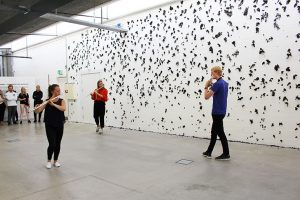
Manon Bellet, Brève braises, 2010–present, Site-specific installation, Burnt silk paper affixed to the wall, Dimensions variable, Image courtesy of the artist from a performance at Kunsthal Nord, Aalborg, Denmark, 2017, Photo by Niels Fabæk © Manon Bellet
MANON BELLET | BRÈVE BRAISES
In Manon Bellet’s installations, paper—a material that typically carries written histories—is left to speak for itself. Without making a physical mark, the New Orleans artist stages interactions, performances and interventions that highlight paper’s fragility as a carrier of text and keeper of archives and histories. Long drawn to materials such as graphite and paper, Bellet does not utilize these as tools for drawing, but rather focuses on the transformations that take place when they come into contact with heat, air, sound or movement. In her site-specific installation Brèves Braises, Bellet affixes the charred remains of burned paper on the walls of the museum. From these tattered remains, she creates a script or musical score that runs across an entire length of a long white wall. Created in collaboration with musicians that Bellet invites to compose an accompanying musical score, these burned fragments of paper have a graphic dynamism and rhythm that resembles that of improvisational music or impromptu speech. Over the course of her installation, she allows these papers to gradually drop to the floor, encouraged by movement of air generated by the improvisational energy of bodies and instruments as they move by and activate the installation.
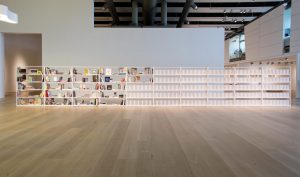
Wafaa Bilal, 168:01, 2016–present, Site-specific installation, Dimensions variable, Image courtesy of the artist, Photograph by John Dean © Wafaa Bilal
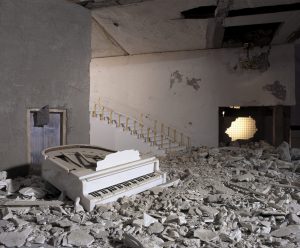
Wafaa Bilal, The Ashes Series: Piano, 2003–2013, Archival inkjet photograph, 40 x 50 in., Image courtesy of the artist © Wafaa Bilal
WAFAA BILAL | 168:01
During the invasion of Iraq in 2003, the College of Fine Arts at the University of Baghdad lost their entire library due to looters who set fire to the collection. More than 70,000 books were destroyed. Over thirteen years later, few books remain for the students to read and study. In 168:01, an austere white library is both a monument to the staggering cultural losses endured throughout Iraq’s history, and a platform for its potential rebirth. Comprised of a series of white shelves filled with blank tomes, Bilal’s library doubles as a system of exchange that connects museum visitors directly to Iraq. Aimed at restoring the library’s lost archives, 168:01 positions viewers as potential donors whose contributions fund educational texts from a reading list compiled by faculty members at the University of Baghdad. As book donations accrue, the bookshelf becomes saturated with knowledge and filled with color as the white library is slowly replaced with books from this faculty wish list. In exchange for their contribution, donors receive the blank tomes. At the end of the exhibition, all donated books are to be shipped to the College of Fine Arts, to help begin the process of rebuilding.
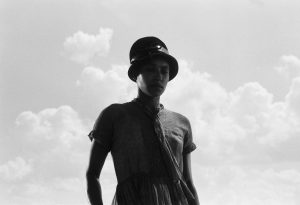
Garrett Bradley, America (film still), 2019, Multi-channel video installation, 35mm film transferred to video, black and white, sound, Image courtesy of the artist © Garrett Bradley
GARRETT BRADLEY | AMERICA
Garrett Bradley’s multi-channel video installation America reimagines a lost history of African-American silent film. Bradley, a filmmaker and artist based in New Orleans, takes as her starting place a 2013 survey conducted by the Library of Congress—which states that 70 percent of American silent films made between 1912 and 1929 have gone missing—to propose that there was an entire body of cinema made by and for African-American audiences, artists and filmmakers, created and since lost. In America, a multi-channel video installation filmed in New Orleans using local non-actors, Bradley interweaves performance, text and visual quotes from recently rediscovered silent films to reconstitute a lost archive of African American film, counteracting cultural amnesia through the creation of new work. NOMA’s presentation of America will take the form of an immersive three channel video installation in NOMA’s special exhibition galleries, alongside twelve stills from the film that will be printed and displayed in the museum’s grand entrance. This presentation marks the first major museum exhibition of Bradley’s work in New Orleans, a city she has lived and worked in for the past nine years. This presentation will provide the New Orleans communities she collaborated with to create America the chance to see and engage with the film, and also allow Bradley to reach new communities throughout the city.
MAHMOUD CHOUKI | SAFAR
Mahmoud Chouki is a master guitarist, multi-instrumentalist and composer living and working in New Orleans. His art draws together music from many different international contexts to consider how music can speak across cultural divides. His own compositions incorporate musical influences from across the globe, ranging from European classical, Andalusian from Southern Spain, Levantine music from the Middle East, Maghrebian music from North Africa, Latin American music, and jazz from the Southern United States. Integrating sounds and rhythms from many different cultures, Chouki combines classical guitar with instruments such as the loutar, a traditional instrument of the Middle Atlas region of Morocco; the sintir, a Sub-Saharan instrument from the Sahel region (Mali); the oud, an oriental lute; the Algerian mandole, a steel-string fretted instrument resembling an elongated mandolin; the Bağlama saz, a Turkish long necked bowl-lute; the banjo, and a variety of percussion instruments. As artistic director of Rencontre Orient-Occidentat Chateau Mercier in Sierre, Switzerland, Chouki has brought together a wide range of international musicians to envision new forms of dialogue between East and West, with music often the only common language between performers.
For Bodies of Knowledge, Chouki will create a new musical composition, and series of site-specific performances entitled Safar, which means “to travel” in Arabic. Through collaboration with a group of international musicians in New Orleans, Chouki will create a series of five live performances in NOMA’s Great Hall, and a series of improvisational concerts within the exhibition space. Chouki will also work with musicians in New Orleans to create a new musical composition that responds to the art on view in the exhibition, as well as the histories of travel and cultural migration that define contemporary music. This series of performances will culminate in a final performance on the closing day of the show in which all of the musicians Chouki works with over the course of the project will come together to collectively perform Chouki’s new composition.
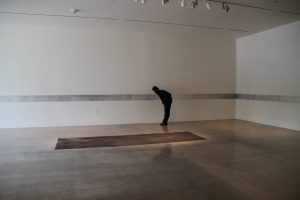
Adriana Corral, Memento, 2013–present, Site-specific installation, Dimensions variable, Female victim names (Juarez, Chihuahua, Mexico) transferred onto (three) walls: acetone, ash burial plot in the center of the space (dimensions of plot, 4ft x 8ft x1inch), Ashes obtained from burned name listings transferred onto wall, Installation image from the McNay Museum, San Antonio, Texas, 2013 © Adriana Corral
ADRIANA CORRAL | MEMENTO
Adriana Corral’s work draws attention to the widespread disappearances and murders of women and girls in Juarez, Chihuahua, Mexico. Through her site-specific installation, Memento, Corral transfers the women’s names onto the museum’s wall. Honoring the women killed in these acts of violence, Corral reduces to ashes the transferred name documents, creating an ash burial plot sifted onto the museum floor. Working with a human rights attorney, Corral conducted research into the Campo Algonero v. Mexico case, and gained access to classified documents and archives that she was able to read, but could not reproduce or publish. In a process that acquires the spiritual and emotional weight of a ritual act, she burns copies of these documents and uses the resulting ash to transfer the names of missing women directly onto the gallery wall. Given the instability and fragility of her material, the names become illegible, yet the process of inscribing them honors the lost histories of these unknown victims. Memento memorializes the victims of human rights violations while also speaking to the politics of silence, disappearance, and absence that mark contemporary geopolitics.
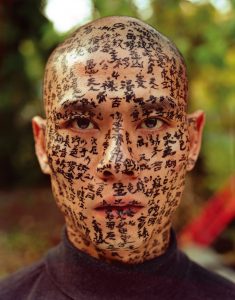
Zhang Huan, Family Tree, 2000 (Detail), 9 Chromogenic color prints on Fuji Archival paper, Edition A/P 1, 80 x 70 inches each, Collection of Howard and Joy Osofsky, Photograph courtesy Zhang Huan Studio © Zhang Huan, courtesy Pace Gallery
ZHANG HUAN | FAMILY TREE
Created in 2001, shortly after the artist moved to New York, this seminal photographic series by the Chinese conceptual artist Zhang Huan documents a day-long performance wherein Zhang covered his face with words, names and stories relevant to his cultural heritage and family history, continuing to layer ink on skin until his face was completely blackened. In the resulting nine sequential photographs, the viewer witnesses the process by which his face is gradually obscured by writing. Zhang worked with calligraphers to transcribe the names of his own family members as well as poems, Chinese folktales, and other stories and personal recollections, proposing that an individual’s identity is shaped by a complex web of influences and experiences, both past and present, familial and external, real and imagined. Many of the words which are transcribed onto Zhang’s face are associated with the ancient Chinese art of physiognomy, which posits that an individual’s facial features can reveal information surrounding his or her personality and even future destiny. Because of this, the complete obscurity of his face becomes even more poignant and stirring. Zhang explains that “I always feel that some mysterious fate surrounds human life which you can do nothing about, you can do nothing to control it, it just happened.” Yet, the artist also provokes the viewer to consider the way we need to take control over the weight of history, which threatens to obscure and overtake one’s unique sense of individual agency. His unchanging, confrontational expression stands as a form of resistance: a refusal, as curator Christopher Philips writes, “to allow his identity to be consumed by the tide of tradition.”
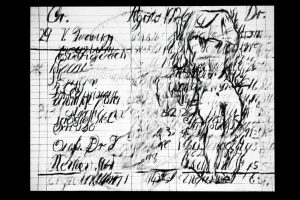
William Kentridge, Zeno Writing, 2002, Video still of animated film using charcoal and pastel drawing, footage from theater performance, documentary material from First World War, 35mm and digital video, Video and DVD transfer, 12 minutes, Museum of Fine Arts, Houston, Joint acquisition of the Museum of Fine Arts, Houston, funded by Nina and Michael Zilkha; and the High Museum of Art, Atlanta, 2004.201, Image courtesy the artist and Marian Goodman Gallery © William Kentridge
WILLIAM KENTRIDGE | ZENO WRITING
Zeno Writingis a stop-motion animated film by the South African artist William Kentridge inspired by Italo Svevo’s 1923 novel, Confessions of Zeno. The novel, set against the backdrop of industrial development and war in the early decades of the last century, centers on an individual living through extreme social and civic transformation. The film visualizes the journey of Zeno through a relentless reworking of text and image, created through Kentridge’s signature style of stop animation, in which a single sheet of paper is laboriously erased and rewritten. The shadows of erasures left behind from earlier renderings make visible the processes of evasion and ongoing transformation of history, politics and memory. Accompanied by a soundtrack by Kevin Volans, the film’s music telegraphs Zeno’s developing anxiety and fear. Beginning soft and slow, the music follows a progression of images of calm interiors and public parades, only to give way to scenes of warfare and destruction accompanied by a booming operatic tempo. Kentridge’s integration of figure, inscription, and sound draw together many different systems of recording and interpreting one’s history, only to illustrate that all can be eventually manipulated, rewritten, erased and asserted anew.
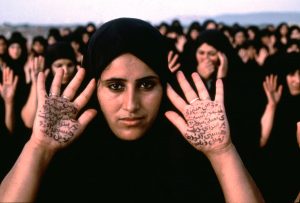
Shirin Neshat, Rapture Series (Women with Writing on Hands), 1999, Chromogenic color print, 40 ½ x 60 ¼ inches, Edition of 5 + 2AP. New Orleans Museum of Art, Museum purchase, 2001.292, © Shirin Neshat, courtesy Galerie Jérôme de Noirmont, Paris
SHIRIN NESHAT | RAPTURE SERIES
Born in Iran, Shirin Neshat has lived and worked in the United States since 1974. The artist’s first trip back to Iran in the early 1990s inspired her early work: stark, black-and-white photographs that probe stereotypes of Islamic militancy and femininity. Neshat’s later video installations embraced movement, music, and color, with lyrical, dream-like sequences evoking Iran’s cultural landscape. This still from Neshat’s 1999 film, Rapture, highlights a recurring motif in her work: Farsi text superimposed over flesh. Here, the calligraphy has been inscribed on the exposed palms of women clad in black chadors.The illegibility of the script to non-native speakers provokes questions about the ambiguity and multiplicity of meanings embedded in both words and images, and how complex political and religious ideas can be mistranslated and projected onto Muslim female bodies. Represented in the exhibition through a photograph part of NOMA’s permanent collection, this installation will be accompanied by a presentation of Neshat’s films in the museum’s auditorium.
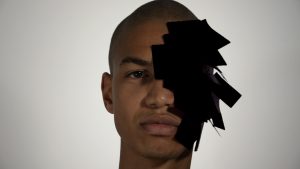
Wilmer Wilson IV, Black Mask, 2012, Single channel video, 5:56 minutes, Edition 3/5, Museum purchase
WILMER WILSON IV | BLACK MASK
In this presentation of Wilmer Wilson IV’s work—his first in New Orleans—the artist’s 2012 video Black Mask will be shown alongside a series of books from the artist’s more recent Running Tour performances, executed in iconic tourist destinations across the world such as Rome, Philadelphia, London, Brussels, Barcelona, and now, for this exhibition, New Orleans.In Black Mask, the artist slowly obscures his face with black Post-it notes, asking us to consider the paradoxical ways in which black bodies are both hyper-visible and at the same time erased from dominant histories and narratives. At the end of the video, the artist peels off all of the sticky notes, save one, envisioning how we might make more visible bodies that are often marked by absence. At NOMA, this video will be placed into conversation with book publications that document the artist’s self-designed Running Tour performances. Created as a subtle parody of a tourist guidebook, Wilson snaps photographs without halting his stride along routes that include well-known sightseeing spots as well as indistinct, ostensibly unremarkable locations. Filled with blurred, disorienting images, these books make tangible the tension between traditional forms of historic preservation and the lived experience of contemporary cities. Taken together, Black Maskand Wilson’s running tours present the body not as a vehicle for self-portraiture, but rather as a social site able to adapt to and shape the environment it inhabits, imagining how we might reconfigure the collective spaces, histories, and experiences of places such as New Orleans.
EDWARD SPOTS AND DONNA CRUMP | DANCE PERFORMANCE: BLACK MAGIC
Friday, June 28, 5 pm
New Orleans native Edward Spots is an internationally renowned dancer, choreographer, and actor. Spots began his dance training with Baderinwa “Mama” Rolland at the very first charter middle school in New Orleans. He has trained extensively, from NOCCA and New Orleans NORD Centers as a young dancer, to the Walnut Hill School for the Fine Arts, The Joffrey Ballet School in New York, and the Washington School for Ballet in Washington, DC. In 2010, he enrolled at the Ailey School, ultimately becoming part of the Ailey II Company where he performed and taught in the US and abroad in more than 8 countries. He has danced with Urban Ballet Theatre, New Orleans Ballet Theatre, Civic Scranton Ballet, Delaware Dance Company, and Marigny Opera Ballet, and has been featured in numerous commercials and television shows. Spots played a lead role in the film America by Garrett Bradley.
Donna Crump is an award-winning choreographer, actress, and performing artist from New Orleans, who has been dancing for more than 30 years. She holds a BFA in dance from Tulane University and has also studied and created dance in New York, as well as South Africa, with the First Physical Dance Theatre, and in Brazil with the country’s premier dance company Grupo Corpo. Crump served as the resident choreographer for the Marigny Opera Ballet in New Orleans for its inaugural season in 2014/2015. Donna is a current performer and artistic director of her contemporary dance company, Good Dance. Since 1984 she has performed across the US in such places as New Orleans, Houston, Boston, and Alabama. Since founding Good Dance in 2012, Crump has produced several full-length works, started a pre-professional division of Good Dance, and starred in several commercials and films alongside directors like Spike Lee and Garrett Bradley. Crump played a lead role in the film America by Garrett Bradley.
For Bodies of Knowledge, Spots has developed a new site-specific dance performance in collaboration with Crump as guest choreographer. Entitled Black Magic, and unfolding in five distinct dance movements, this work explores varying aspects of black cultural identity through dance and the body. Investigating a range of topics from suffering, to beauty, to joy, this original work depicts joy as a form of resistance to dominant depictions of the black experience. Black Magic considers what is often forgotten and omitted from prevalent representations of black life. This work features Spots, Crump, and eight youth dancers from Dancing Grounds, a New Orleans-based nonprofit organization that builds community through dance with programs that work at the intersection of arts, education, and social justice.
Black Magic
Movement I: Black Suffering
Movement II: Black Anger
Movement III: Black Beauty
Movement IV: Black Love
Movement V: Black Joy
Edward Spots, Artistic Director
Donna Crump, Guest Choreographer
Performed by Donna Crump, Edward Spots, and youth dancers from Dancing Grounds, including Shelby Robert, Akilah Toney, Daniel Gray, Necai Byrd, Johari Smith, Amaya Smith, Akelah Sherma, and Amira Mumford
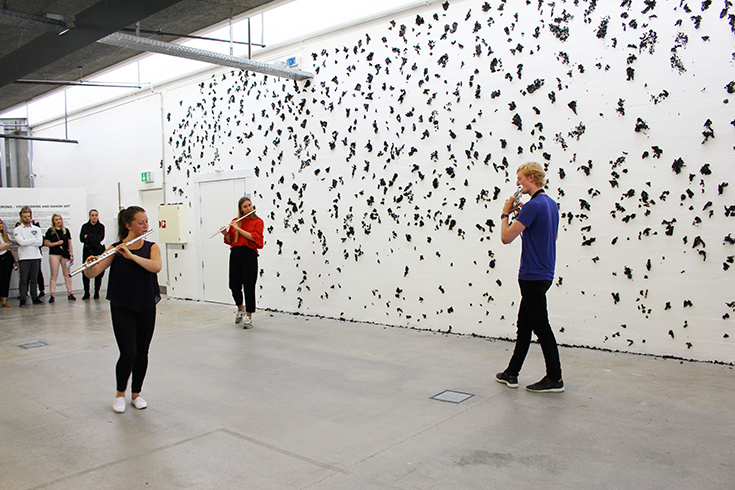
Brèves braises
2010–present
Manon Bellet
Burnt silk paper affixed to the wall
Image courtesy of the artist from a performance at Kunsthal Nord, Aalborg, Denmark, 2017, Photo by Niels Fabæk © Manon Bellet
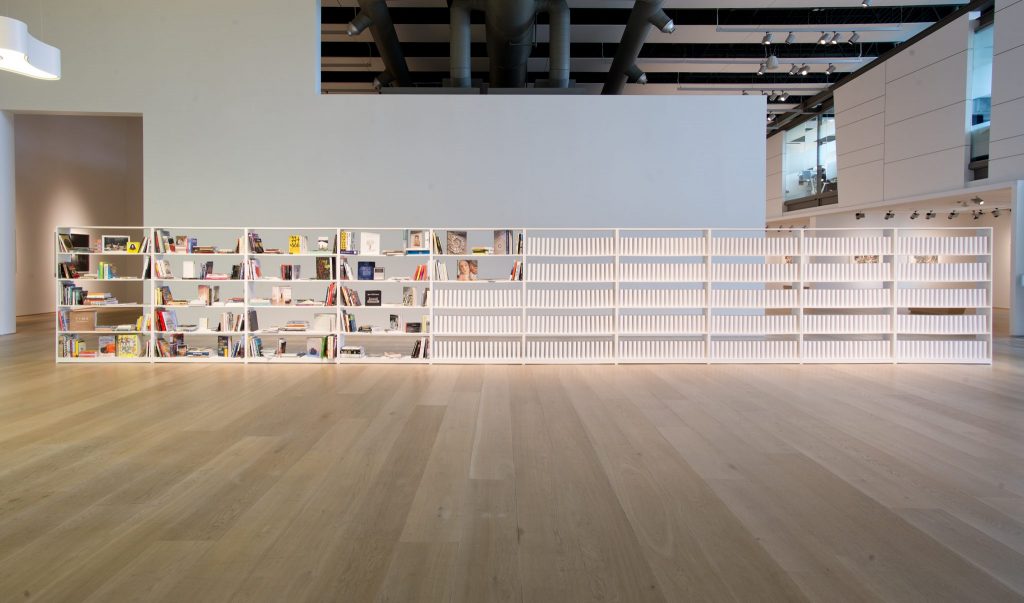
168:01
2016–present
Wafaa Bilal
Image courtesy of the artist, Photograph by John Dean © Wafaa Bilal
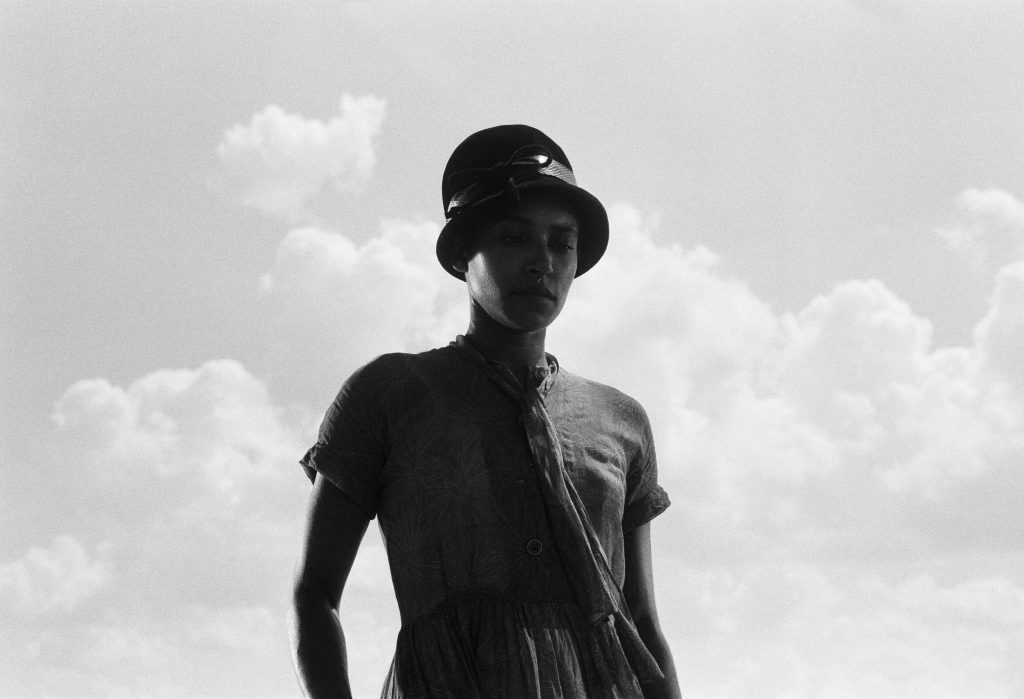
America
2019
Garrett Bradley
Multi-channel video installation, 35mm film transferred to video, black and white, sound
Image courtesy of the artist © Garrett Bradley
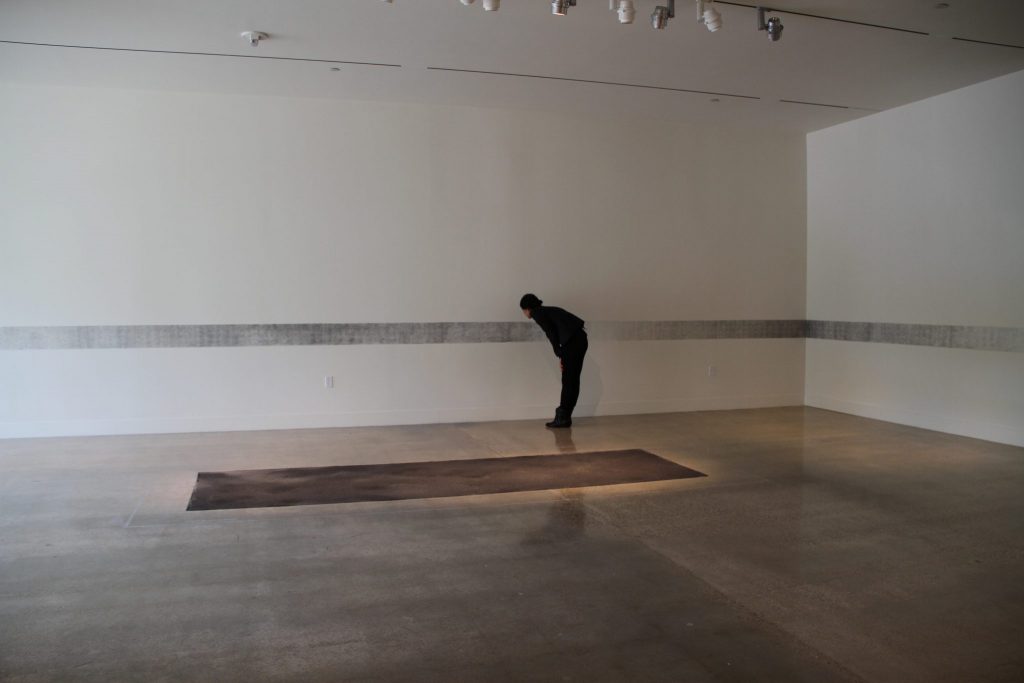
Memento
2013–present
Adriana Corral
Installation image from the McNay Museum, San Antonio, Texas, 2013 © Adriana Corral
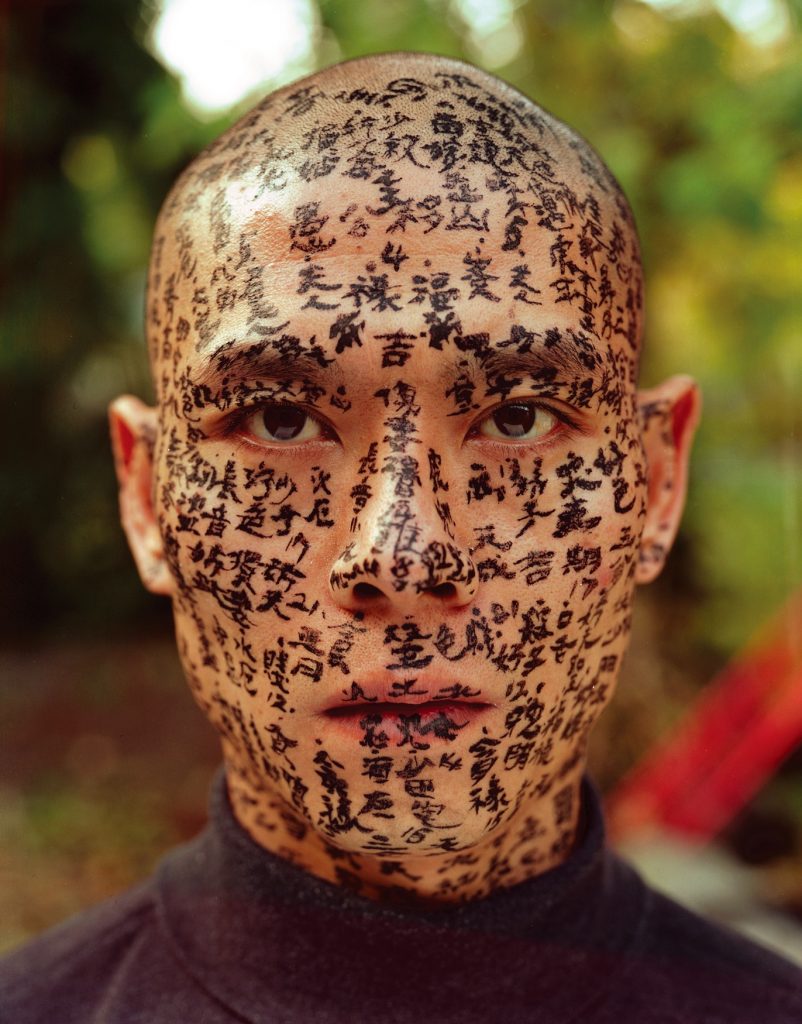
Family Tree
2000
Zhang Huan
Chromogenic color prints on Fuji Archival paper
80 x 70 inches
Collection of Howard and Joy Osofsky, Photograph courtesy Zhang Huan Studio © Zhang Huan, courtesy Pace Gallery
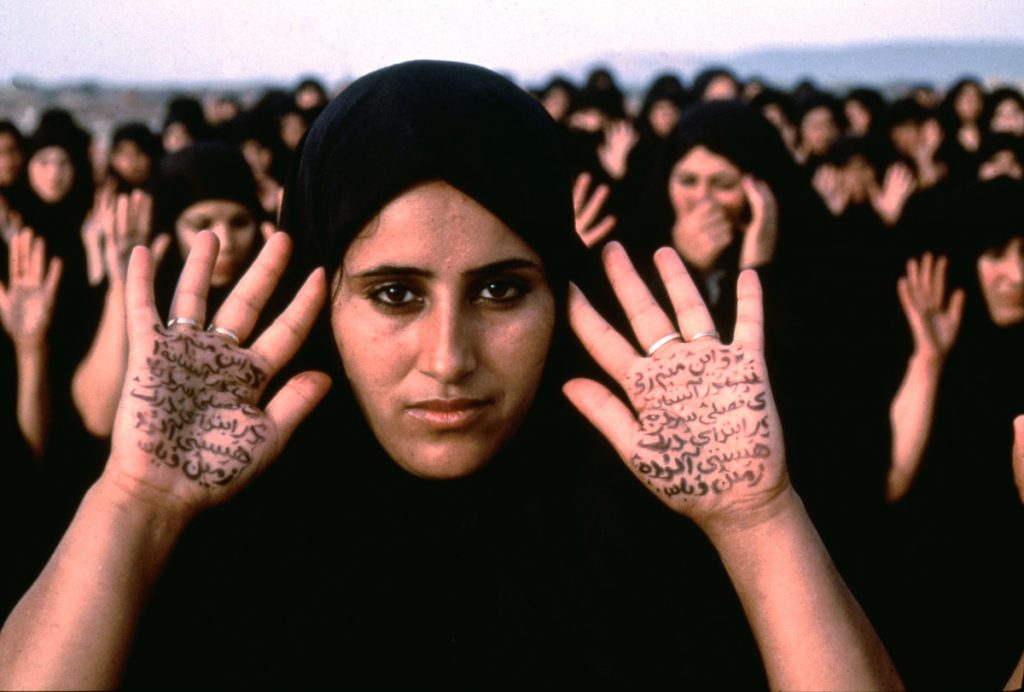
Rapture Series (Women with Writing on Hands)
1999
Shirin Neshat
Chromogenic color print
40 ½ x 60 ¼ in.
Museum purchase, © Shirin Neshat, courtesy Galerie Jérôme de Noirmont, Paris
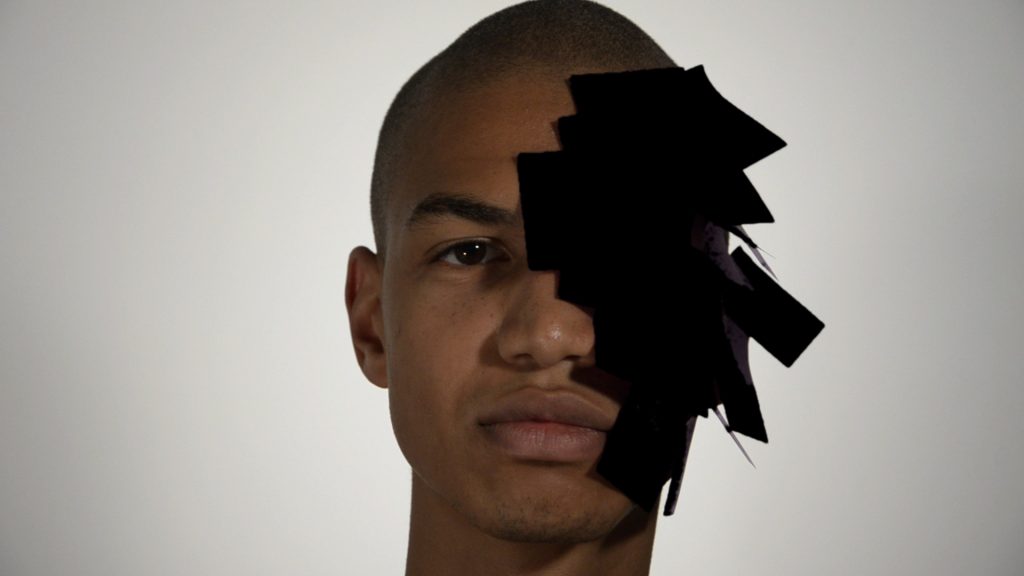
Black Mask
2012
Wilmer Wilson IV
Single channel video
5:56 minutes
Museum purchase, © Wilmer Wilson IV, courtesy CONNERSMITH, Washington, DC
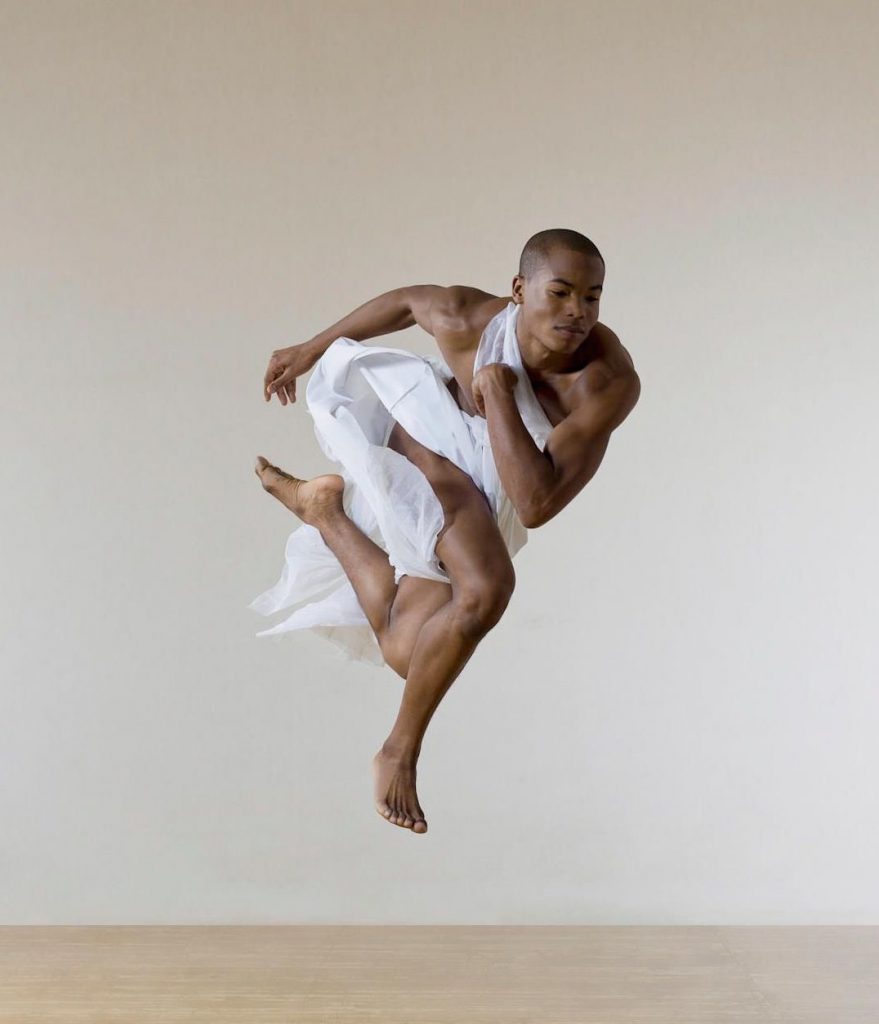
Edward Spots
Photography by Lois Greenfield © Lois Greenfield
